 Divide the first term of the dividend by the first term of the divisor, and write the result as the first term of the quotient. Multiply the whole divisor by the first term of the quotient, and subtract the product from the dividend. Divide the first term of the dividend by the first term of the divisor, and write the result as the first term of the quotient. Multiply the whole divisor by the first term of the quotient, and subtract the product from the dividend.  The boys' algebra - Page 20by James Cahill (of Dublin.) - 1875 - 209 pagesFull view The boys' algebra - Page 20by James Cahill (of Dublin.) - 1875 - 209 pagesFull view - About this book
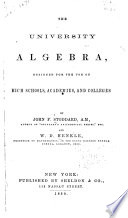 | John Fair Stoddard, William Downs Henkle - Algebra - 1859 - 538 pages
...both dividend and divisor according to the ascending or descending powers of the same letter in both. 2. Divide the first term of the dividend by the first term of the divisor ; the result will be the first term of the quotient, by which multiply all the terms in the divisor,... | |
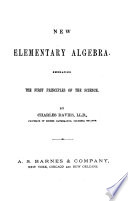 | Charles Davies - Algebra - 1859 - 324 pages
...dividend and divisor with reference to a (Art. 44), placing the divisor on the left of the dividend. Divide the first term of the dividend by the first term of the divisor ; the result will be the first term of the quotient, which, for convenience, we place under the divisor.... | |
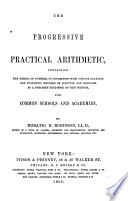 | Horatio Nelson Robinson - Arithmetic - 1859 - 348 pages
...hand of the dividend, as in simple numbers. II. Find the first term of the quotient either by dividing the first term of the dividend by the first term of the divisor, or by dividing the first two terms of the dividend by the first two terms of the divisor ; multiply... | |
 | Horatio Nelson Robinson - Arithmetic - 1860 - 444 pages
...hand of the dividend, as in simple, numbers II. Find the first term of the quotient either by dividing the first term of the dividend by the first term of the divisor, or by dividing the first two terms of the dividend by the first two terms of the divisor ; multiply... | |
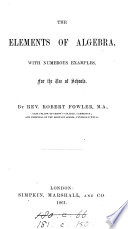 | Robert Fowler - 1861 - 426 pages
...both the divisor and dividend according to the powers of the same letter (a in the example) ; then to divide the first term of the dividend by the first term of the divisor, place the result in the quotient and multiply the divisor by it ; subtract and proceed similarly with... | |
 | Thomas Sherwin - 1862 - 252 pages
...Arrange the dividend and divisor according to the powers of the same letter, beginning with the highest. 2. Divide the first term of the dividend by the first term of the divisor, and place the result as the first term of the quotient; recollecting, that if- both terms have the... | |
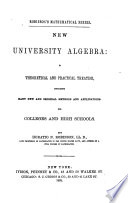 | Horatio Nelson Robinson - Algebra - 1863 - 432 pages
...I. Arrange loth dividend and divisor according to the descending powers of one of the letters. II. Divide the first term of the. dividend by the first term of the divisor, and write the result in the quotient. III. Multiply the whole divisor by the quotient thus found, andsubtract... | |
 | Isaac Todhunter - Algebra - 1863 - 302 pages
...ascending powers of some common letter, or both according to descending powers of some common letter. Divide the first term of the dividend by the first term of the divisor, and put the result for the first term of the quotient; multiply the whole divisor by this term and... | |
 | Benjamin Greenleaf - 1863 - 338 pages
...terms, 3а? с -\-6abc -f- 3 V с -{- 3 a c1.-f- 3 6 c1 -f- c", for a remainder or dividend. Dividing the first term of the dividend by the first term of the trial divisor, 3а1, we obtain c, the third term of the root. Adding together three times the square... | |
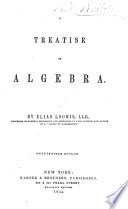 | Elias Loomis - Algebra - 1864 - 386 pages
...divisor. (74.) From this investigation we deduce the following BULK FOR THE DIVISION OF POLYNOMIALS. 2. Divide the first term of the dividend by the first term of the divisor, the result will be the first term of the quotient. 3. Multiply the divisor by this term, and subtract... | |
| |